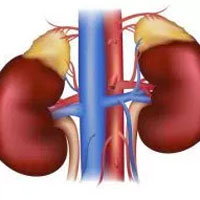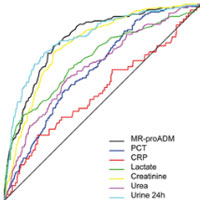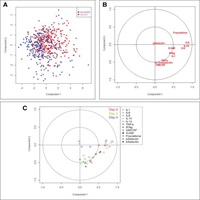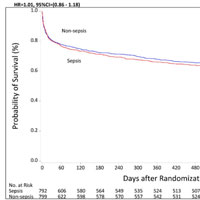Tag: analysis

Identifying Distinct Subgroups of ICU Patients: A Machine Learning Approach
Identifying subgroups of ICU patients with similar clinical needs and trajectories may provide a framework for more efficient ICU care through the design of care platforms tailored around patients' shared needs. However,... read more

Gender Disparities Among Adult Recipients of Bystander CPR in the Public
Males had an increased likelihood of receiving Bystander Cardiopulmonary Resuscitation (BCPR) compared with females in public. BCPR improved survival to discharge, with greater survival among males compared with females.... read more

Early Versus Late Initiation of Renal Replacement Therapy in Critically Ill Patients
Early initiation of renal replacement therapy (RRT) effect on survival and renal recovery of critically ill patients is still uncertain. We aimed to systematically review current evidence comparing outcomes of early versus... read more

Perspectives on Strained ICU Capacity: A Survey of Critical Care Professionals
Strained intensive care unit (ICU) capacity represents a supply-demand mismatch in ICU care. Limited data have explored health care worker (HCW) perceptions of strain. Strained capacity is perceived as common among inter-professional... read more

Predicting the Requirement for RRT in Intensive Care Patients with Sepsis
Sepsis is one of the most frequent causes of acute kidney injury (AKI) in critically ill patients, with initial organ impairment often followed by dysfunction in other systems. Renal dysfunction may therefore represent one... read more

Hemodynamic Tolerance to IV Clonidine Infusion in the PICU
Although administration of clonidine is often associated with bradycardia and hypotension, these complications do not seem clinically significant in a mixed PICU population with a high degree of disease severity. Clonidine... read more

Increased Early Systemic Inflammation in ICU-Acquired Weakness
The main objective is to investigate whether patients who develop ICU-acquired weakness have a different pattern of systemic inflammatory markers compared with critically ill patients who do not develop ICU-acquired weakness.... read more

Travel Times Affect Neurocritical Care Unit Nurse Staffing Levels
For specialist nurses on neurocritical care units, accompanying patients for imaging scans and other procedures has a major impact on nurse staffing ratios, reports a study in the Journal of Neuroscience Nursing. Over 30... read more

Doctors Rely on More than Just Data for Medical Decision Making
Many technology companies are working on artificial intelligence systems that can analyze medical data to help diagnose or treat health problems. Such systems raise the question of whether this kind of technology can perform... read more

Positive End-Expiratory Pressure Lower Than the ARDS Network Protocol Is Associated with Higher Pediatric ARDS Mortality
Patients with PARDS managed with lower PEEP relative to FiO2 than recommended by the ARDSNet model had higher mortality. Clinical trials targeting PEEP management in PARDS are needed. This was a multicenter, retrospective... read more

Increasing the Number of Medical Emergency Calls Does Not Improve Hospital Mortality
With adjustment for patient factors, illness, and comorbidities, increased emergency calling rates were not associated with reduced in-hospital mortality. Efforts to increase calling rates do not seem warranted. We studied... read more

Health-related Outcomes of Critically Ill Patients With and Without Sepsis
Critically ill patients with sepsis have higher healthcare resource use and costs but similar survival and HRQoL compared to matched patients without sepsis. We conducted a primary propensity score matched analysis of patients... read more

Acute Skeletal Muscle Wasting in Critical Illness
Among these critically ill patients, muscle wasting occurred early and rapidly during the first week of critical illness and was more severe among those with multiorgan failure compared with single organ failure. These findings... read more

Utility of Adjunct Antibiotics After I+D – Systematic Review + Meta-Analysis
Skin and soft tissue abscesses are a common emergency department (ED) presentation. The approach to management has changed little in recent decades: incision and drainage (I+D) and then discharge home with follow up. However,... read more








